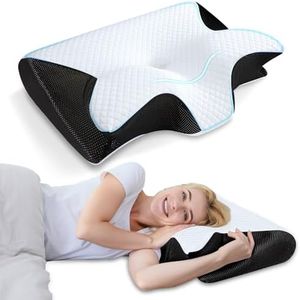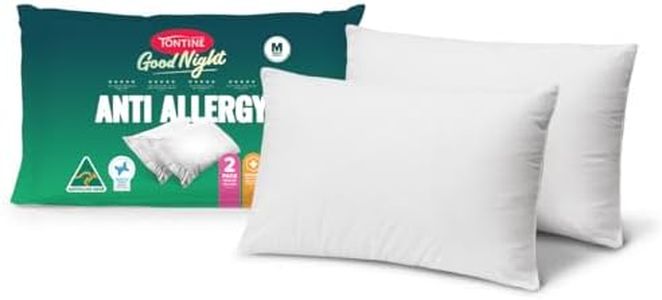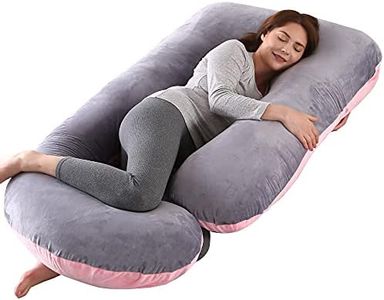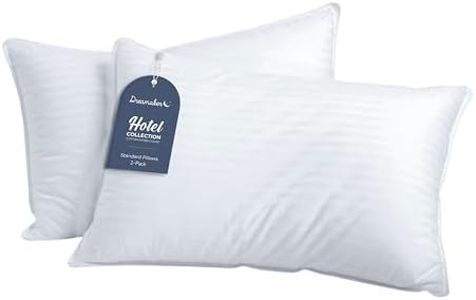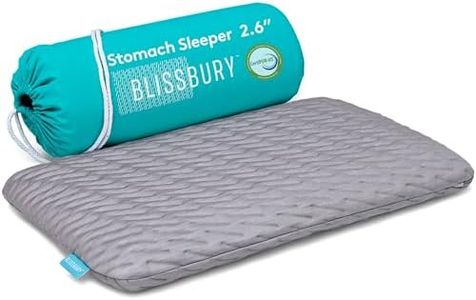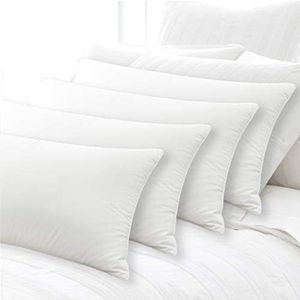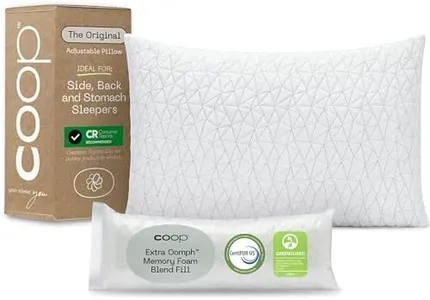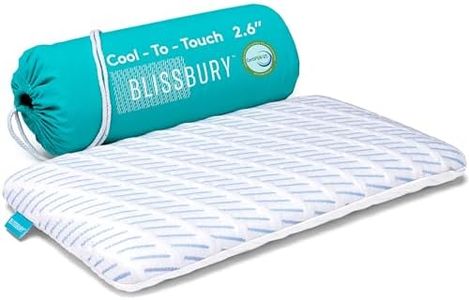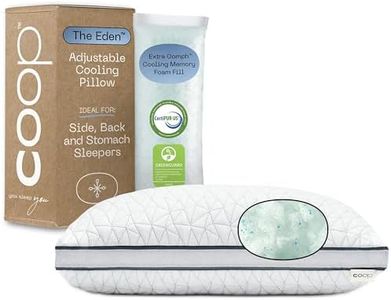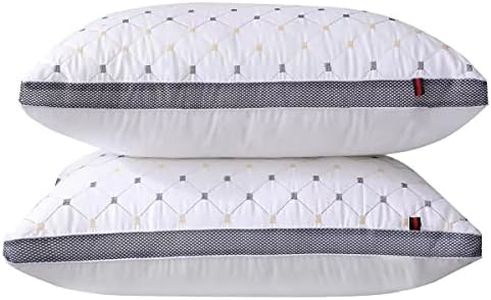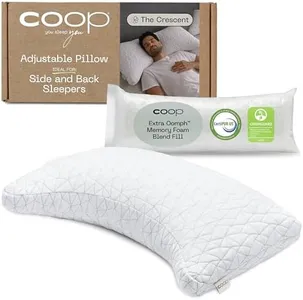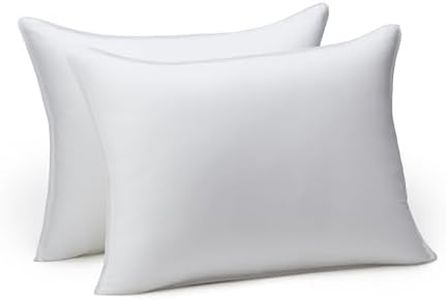We Use CookiesWe use cookies to enhance the security, performance,
functionality and for analytical and promotional activities. By continuing to browse this site you
are agreeing to our privacy policy
10 Best Sleeping Pillows
From leading brands and best sellers available on the web.Buying Guide for the Best Sleeping Pillows
Choosing a sleeping pillow is more important than many people realize, as the right pillow can impact your sleep quality, comfort, and even physical health. Your personal needs, such as sleep position, body size, and any health concerns like allergies or neck pain, should guide you. Instead of focusing just on appearance or brand, pay attention to the materials, support, and shape to find the best match.Loft (Height)Pillow loft, or height, refers to how thick or tall the pillow is when not compressed. This is important because it determines how much support your head and neck get in your natural sleeping position. If the pillow is too high or too low, it can cause neck strain. Low-loft pillows (thin) are usually under 3 inches and may suit stomach sleepers who need minimal lift. Medium-loft pillows (around 3-5 inches) often work well for back sleepers, providing a balance between support and comfort. High-loft pillows (above 5 inches) are best for side sleepers, who need extra height to fill the space between the shoulder and ear. To pick the right one, think about your main sleep position and your body size—wider shoulders need more loft, while petite frames may need a lower one.
FirmnessFirmness refers to how much the pillow resists compression when you lay your head on it. This matters because a pillow that's too soft might not offer proper support, while one that's too hard can be uncomfortable. Soft pillows often suit stomach sleepers, who need just a gentle cushion under their head. Medium-firm pillows tend to be best for back sleepers, balancing support and comfort. Firm pillows usually work for side sleepers, providing solid alignment for the head and neck. Consider your sleep style and whether you prefer a pillow that 'gives' or stays resilient under pressure.
Fill MaterialThe fill material is what’s inside the pillow and it affects softness, durability, support, and even temperature regulation. Common fills include memory foam, down feathers, synthetic fibers, latex, and specialty fills like buckwheat. Memory foam gives contouring support and is good for pain relief, though it can run warm. Down and feather pillows are fluffy and breathable, suiting those who like a soft, shapeable feel, but may not be ideal for allergy sufferers. Synthetic fills like polyester are hypoallergenic and easy to care for, though they may not last as long. Latex pillows are supportive and naturally resistant to dust mites and mold. If you have allergies, look for hypoallergenic materials. Consider if you want a pillow that molds to you, stays cool, is lightweight, or is easy to clean.
ShapeWhile most pillows are rectangular, there are also specialized shapes such as contour, cervical, or wedge designs that aim to support specific needs, such as neck alignment or reducing acid reflux. Traditional shapes suit most users, but if you have neck pain or a special condition, you might benefit from a contoured or orthopedic shape. The right shape depends on your sleep issues and personal comfort—if you wake up with neck stiffness, a contoured pillow might be helpful.
Breathability and Temperature ControlThis spec relates to how well the pillow allows air to circulate and prevents heat buildup. Pillows with good breathability help you stay cool and comfortable, which is especially important for hot sleepers or those in warm climates. Materials like cotton, down, and certain cooling gels are naturally more breathable. Memory foam can retain heat unless designed with cooling features. If you find yourself overheating at night, choose a pillow with better airflow or cooling technology.
Cover MaterialThe cover material is the outer layer that comes directly into contact with your skin. It affects feel, durability, and allergen resistance. Natural fibers like cotton or bamboo are soft, breathable, and often hypoallergenic, while synthetic covers may be more durable but less breathable. If you have sensitive skin or allergies, opt for natural, washable covers. Also, if you sweat during sleep, a moisture-wicking cover can keep you more comfortable.
Care and MaintenanceThis refers to how easy it is to keep the pillow clean and fresh. Some pillows can be machine-washed, while others require spot cleaning or dry cleaning. Ease of care is especially important for people with allergies or for children's bedding. If you want a low-maintenance option, look for machine-washable pillows or those with removable, washable covers. Remember, keeping your pillow clean helps prevent dust mites and prolongs the pillow’s life.
